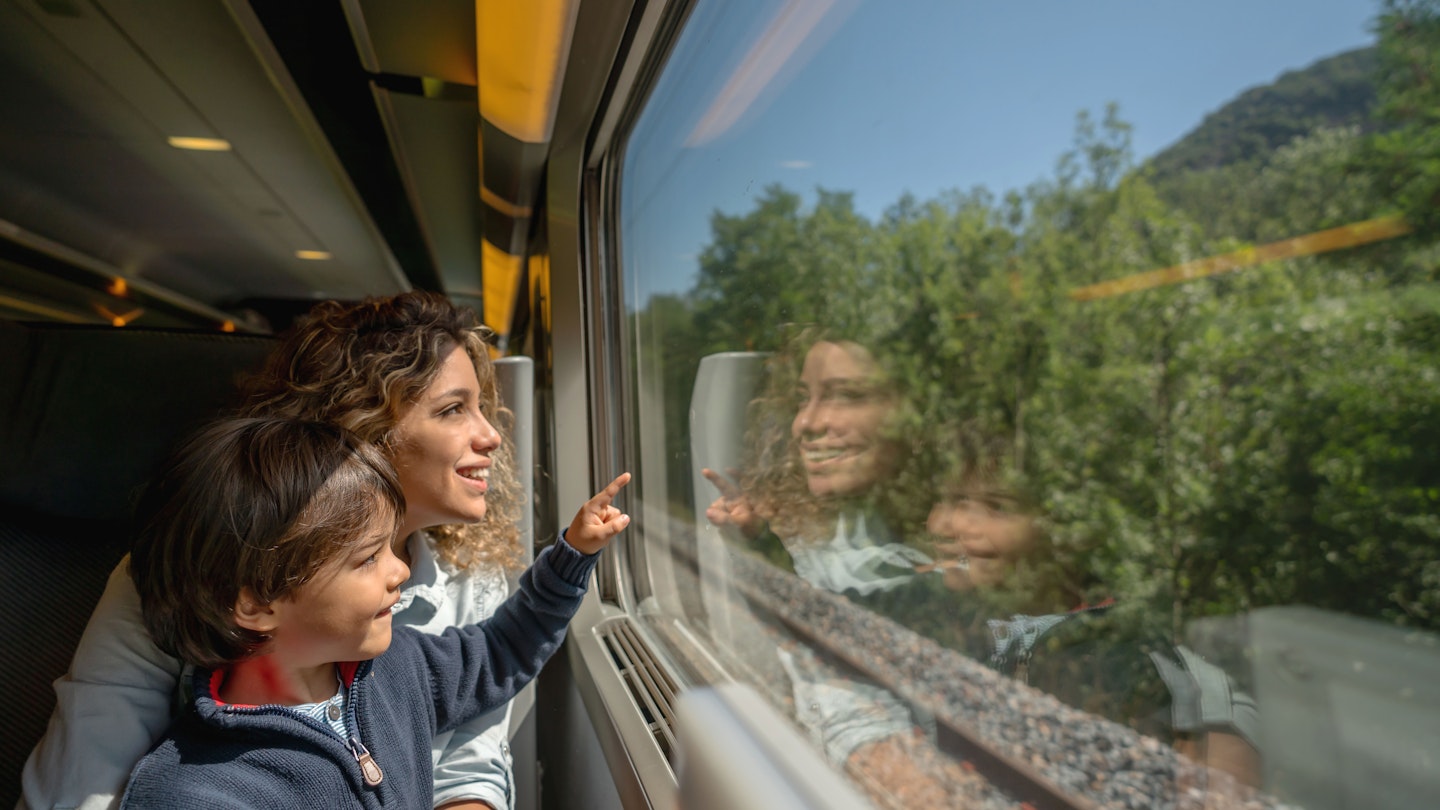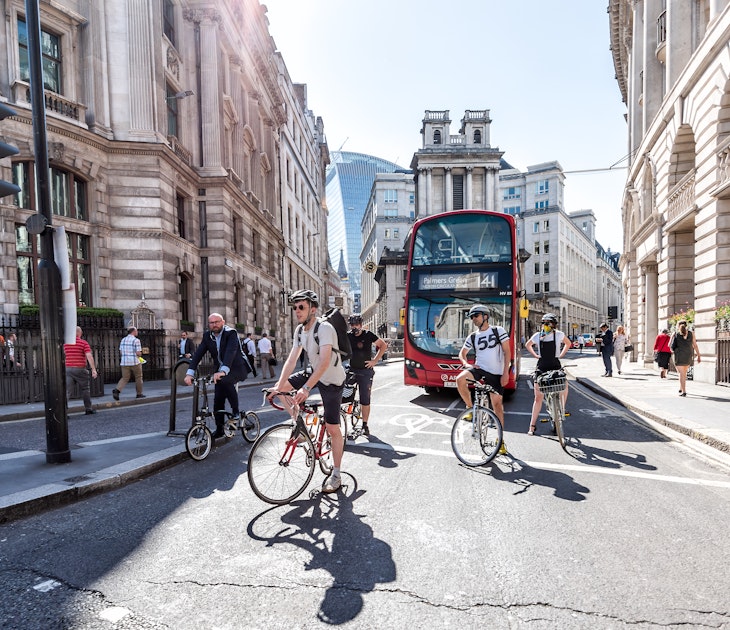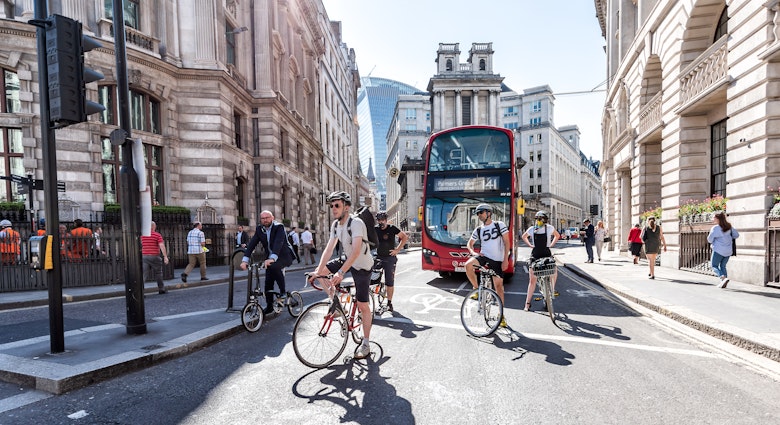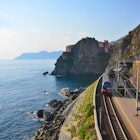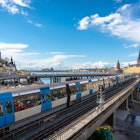Chugging past rolling hills full of heritage vineyards, cutting through spectacular mountainous backcountry, or zipping along the coastline of the Mediterranean: there’s no better way to experience the beauty and bounty of France than from the window seat of a train.
The superb rail network in la République makes it easy to explore the far corners of this rich, varied country. We’ve chosen the following journeys because they offer scenic beauty, keep up a vintage heritage or are just plain fabulous. All aboard for the best train rides in France!
1. Le Cévenol is the most remote and wild train ride
Clermont-Ferrand to Nîmes; 303km (188 miles)
The savage beauty of the isolated Massif Central opens up on one of France’s oldest train routes – and one of the most challenging to build, given the topography of the Gorges de l’Allier. In the mid-1800s, the technology to blast through granite and basalt mountains didn't yet exist, so in a triumphant feat of engineering, workers used rudimentary techniques to blast out the line’s tunnels. Le Cévenol (also known as La Ligne des Cévennes) opened in 1870 for both passengers and freight, including coal headed to the Rhône region and wine to Paris.
The Cévenol forms part of a longer, cross-country route linking Marseille to Paris, but most riders jump aboard at Clermont-Ferrand, in the heart of volcano country. You’ll start off admiring volcanic plugs dotting the landscape before heading through the pièce de résistance: the Gorges de l’Allier. High above the Allier River, magnificent views open up, stretching far across the gorge.
Along the way, you’ll cross three historic viaducts, wind through several impressive valleys and traverse 106 tunnels. The highest point is La Bastide-Puylaurent at 1024m (3360ft), while the Chamborigaud viaduct promises a heart-in-mouth experience as you teeter high above the landscape for 409 endless meters (1341ft).
Planning tip: Maintenance work is often carried out in the spring, and SNCF buses replace trains. Be sure to check ahead before booking.
2. Le Train du Montenvers will get you up close to a glacier
Chamonix-Mont-Blanc to Montenvers; 5km (3 miles)
Mont Blanc towers over the Alps, its eternally snow-capped peak providing a majestic vista from afar. To get up close to this age-old mountain, hop aboard the famous cherry-red Train du Montenvers, as sightseers have done since 1908.
Departing from the main train station in Chamonix, the rack-and-pinion train trundles up the mountainside at an angle greater than 9%, climbing through dark forests and tunnels pierced through the rock. Sit on the left side of the train to take in glimpses of Mont Blanc between the fir trees.
It takes about 20 minutes to ascend 1000m (3280ft) up the mountain and – just when you think the high mountain scenery can’t get any more stunning – you arrive at the foot of Mer de Glace, a valley glacier (literally, “sea of ice”) at an altitude of 1913m (6276ft). From here, you can take in the north face of the Grandes Jorasses, an immense face of rock and ice.
Yet the most amazing sights are the dense, blue-colored ice caves of the glacier, through which you can walk to admire ice sculptures (the excursion is included in the price of the train ticket). The interactive Glaciorium, which recounts the glacier’s history, is another must-see. Grab a hot chocolate at Le Panoramique cafe before heading back down, or spend the night at the historic Refuge du Montenvers, with its stunning patio overlooking the Mer de Glace.

3. Marseille to Ventimiglia is the best train ride for dazzling sea views
Marseille to Ventimiglia; 187km (116 miles)
Traveling from Marseille to Ventimiglia in southern France along the SNCF tracks might be a standard journey. The views, however, are anything but. You will be challenged to remain seated for much of the way, as stunning scenes of the azure-blue Mediterranean Sea slide by the train’s window, illustrating the allure of the South of France. Interspersed are glimpses of maquis-covered cliffs (maquis is the tantalizing blend of herbs that grow wild here), terracotta-colored villages, and palm-tree-bedecked hills.
The stops along the way are fabled destinations unto themselves: legendary St-Tropez, made famous by then-unknown Brigitte Bardot; Cannes, with its star-studded legacy; Monaco, home of the Grimaldi royals; and Nice, with its intoxicating mix of world-class museums and legendary beaches. But there are lesser-traveled places as well, including gorgeous Èze Plage, with its medieval village perched impossibly high on a nearby peak, and down-to-earth Menton. Get out, explore, take in some sun – and catch the next train onward later.
The 50-minute stretch between Nice and Ventimiglia is perhaps the most stunning, as you glide past art deco villas, sparkling bays and pastel-colored towns marching up palm-tree-dotted hillsides. You end just at the Italian border, where you have the option of turning around and seeing it all over again.
4. Le Train des Pignes is a fabulous vintage train ride
Nice to Digne; 150km (93 miles)
Behind the Mediterranean-lapped shores of Nice, the jagged gray peaks of the Mediterranean Alps beckon from afar. A ride aboard the “Train of Pinecones” chuffs from the glittery seaside up into those snowy mountains in just over three hours, providing stunning, ever-changing views along the way. From Provençal fields and olive groves, you’ll enter a land of deep river gorges and medieval fortresses.
Just 90 minutes from Nice, Entrevaux is a good stop to wander enchanting medieval streets and explore an ancient citadel. Digne-les-Bains, at the end of the line, is cute as can be, with cobblestone streets, bougainvillea-draped stone villas and shops purveying honey, lavender and other local products.
With its diesel railcars and gleaming varnished wood benches, this line is the only remnant of the meter-gauge Chemins de Fer de Provence that once crisscrossed southern France.
The pigne in its name means “pinecone”: perhaps because the train used to run so slowly that passengers could jump off to gather cones or because when the train ran short on fuel, the engineers resorted to burning them. Whatever the case, majestic pine forests surrounding the route add to its scenic allure.
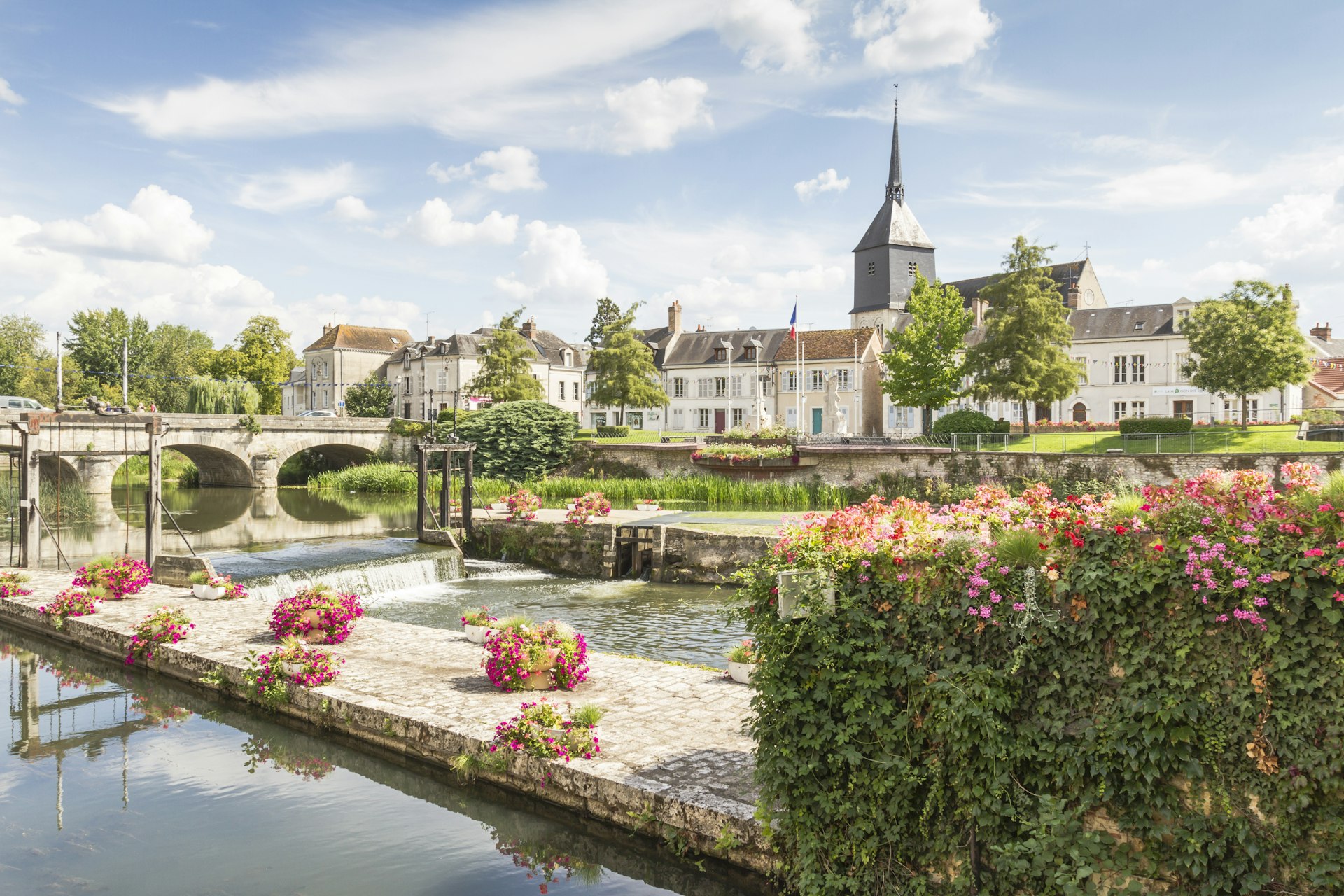
5. Orléans to Le Croisic on Interloire is the best train ride for cyclists
Orléans to Le Croisic; 338km (210 miles)
The Loire Valley unfolds like a fairy tale, with a stunning array of Renaissance castles, green-emerald rivers and charming medieval villages. (Azay-le-Rideau castle was, after all, the inspiration for Sleeping Beauty.) The Interloire railroad (run by the TER Centre-Val de Loire and TER Pays de la Loire) traverses this legendary valley from Orléans, the hometown of Jeanne d’Arc, to the fishing harbor town of Le Croisic on the Atlantic.
Must-visit stops include Blois, crowned by the château once occupied by Louis XII; Amboise, Leonardo da Vinci’s final home; and Nantes, a historic Breton town with an evocative 15th-century château.
Planning tip: You can hop on and off the train with your bike to peddle parts of the 900km (559-mile) Loire à Vélo, a relatively flat bike path through this quintessentially French landscape. The train even has a car dedicated to bicycles in the summer.
6. Eurostar through the Chunnel offers a quick escape to London
Paris to London; 451km (280 miles)
If you fancy a quick getaway from Paris to London, perhaps to say hi to Big Ben or to wander through the V&A Museum, count on the Channel Tunnel. Completed in 1994, this extraordinary engineering feat – nicknamed the Chunnel – burrows deep beneath the expanse of water between France and England, allowing passengers in sleek, high-speed Eurostar trains to travel the channel portion of the trip – 51km (31.5 miles) – in just 30 minutes, with a full 38km (23.5 miles) of that underwater.
From Gare du Nord in the heart of Paris to St Pancras International in the heart of London, the entire trip takes just 2½ hours from door to door. Along the way, you’ll enjoy pretty French and English countryside – inside the tunnel itself, you shouldn’t count on seeing any sea life, only blackness until you emerge into the light of day.
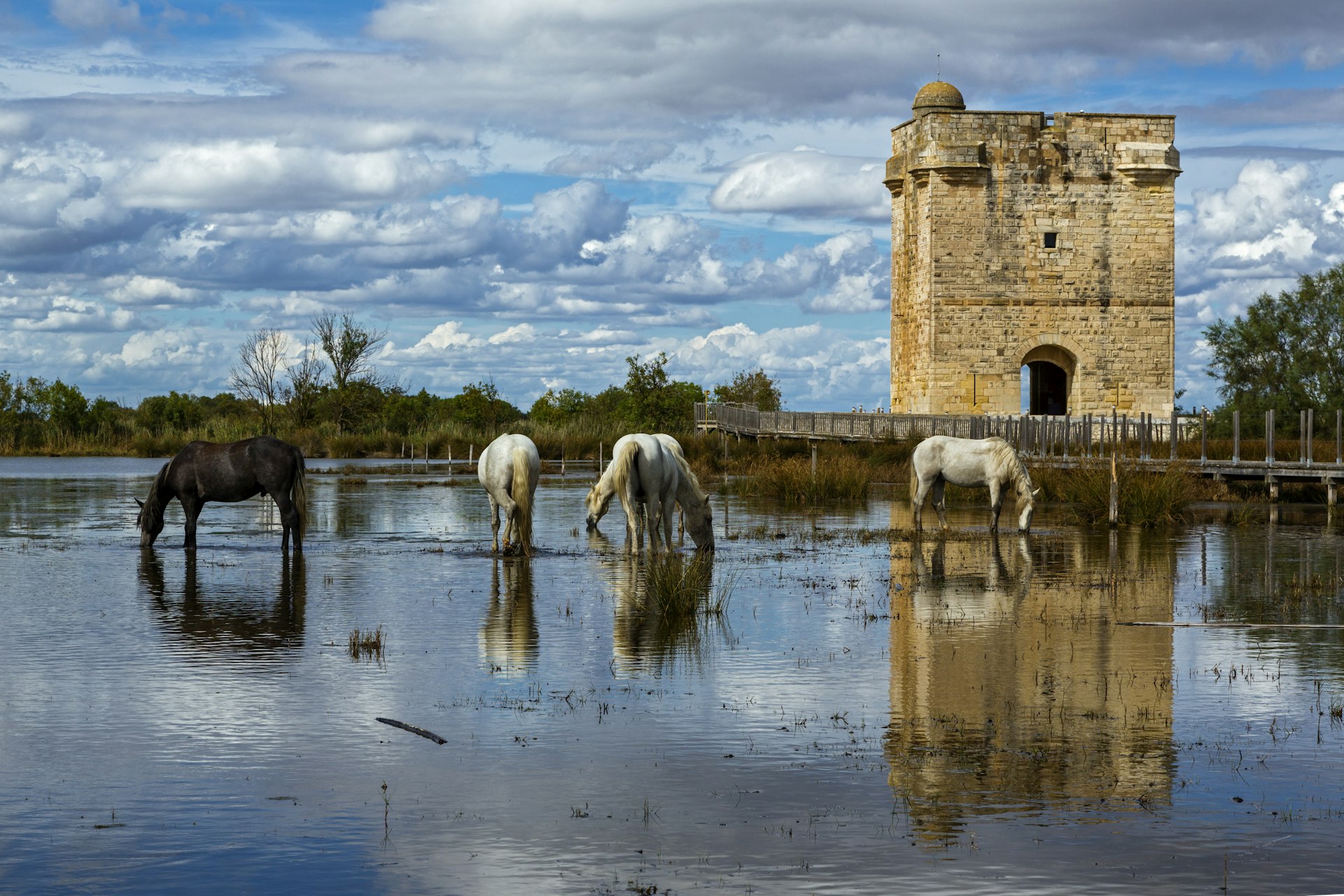
7. The Nîmes to Le Grau-du-Roi Line is the best Wild West train ride
Nîmes to Le Grau-du-Roi; 37km (23 miles)
Wild bulls in Provence? And cowboys? Mais oui. Tucked away in the southwestern corner of Provence, the marshy Camargue – a river delta south of Arles where the Grand and Petit Rhône meet the Mediterranean – reigns as France’s version of the Wild West. Gardians – Camarguais cowboys – live on manades (ranches), riding indigenous white horses with flowing manes as they round up wild black bulls.
Bullfighting is a big part of the culture here (unlike Spanish bullfights, the bulls here are not killed or injured). As are paella (though Camargue rice differs from its Spanish cousin), jazzy manouche music and an independent spirit developed from working a challenging landscape for centuries. You can get to the heart of it all aboard the Nîmes to Le Grau-du-Roi train route.
Departing from Nîmes, the single-track train rumbles through the vineyards of Costières de Nîmes before passing by Aigues-Mortes. Kings departed on their Crusades from this medieval walled city, where you can still stroll ancient streets. From there, you head across the salt marshes and lagoons; keep your eyes out for horses and bulls, as well as pink flamingoes flying overhead. The route ends in Le Grau-du-Roi, just steps from the Mediterranean Sea.
8. Le Petit Train Jaune is the most famous vintage train ride
Villefranche-de-Conflent to Latour de Carol; 64km (40 miles)
This historic little train – or, literally, the “little yellow train” – may be the most famous of them all in France. It’s certainly one of its most stunning when it comes to scenery. Chugging through the mountainous Pyrénées-Orientales from medieval Villefranche-de-Conflent to Latour de Carol on the Andorra border, it winds through gorges and shadowy forests, across viaducts, past two historic fortresses and by one perilously perched ancient monastery. The highest point is the Bolquère Eyne depot, a gasp-inducing 1593m (5225ft) high – making it France’s highest station.
Note that two different types of trains operate this route: a modern enclosed train as well as the vintage train that sometimes runs with open carriages. No need to worry about which one to choose, though – both are painted yellow.
Tips for train travel in France
Train options in France
Several different types of trains travel across France, including local and regional trains, overnight trains with sleeping accommodations and the TGV, the high-speed Trains à Grande Vitesse. To travel between most big cities, the TGV is your best bet: these pioneering high-speed trains travel between 255km/h and 320km/h (160mph and 200mph) and will get you there within hours.
Paris to Bordeaux, for example, is 2½ hours, with Paris to Marseille a mere 3 hours 40 minutes. That said, the slower local and regional trains open up lesser-traveled regions of the country. TGV inOui is a new premium TGV train service operated by SNCF on certain high-speed rail services.
Two classes of tickets are usually available to purchase: first (première), with plush, reclining seats and ample space; and second (deuxième), which is still comfortable but often more crowded. Maps of the French rail network are available on the SNCF website.
How to book a train in France
While you can buy a ticket at the station, either from a ticket window or a vending machine, it’s often cheaper to book your ticket online in advance. Contact Société Nationale des Chemins de Fer (SNCF) or, from the United States, Rail Europe.
Cheap train tickets in France
France offers various rail passes, including the France Pass, with unlimited travel on the national rail network; and the Eurail Global Pass, which includes train travel to neighboring countries. Deals for hotels, museums and other attractions are often included, too. You’ll find more information on the Rail Europe website.
The TGV offers Prem’s tickets (their term for affordable tickets) three months in advance (the booking horizon may be extended in summer).
The Eurostar high-speed train service connecting the United Kingdom with France (and Belgium and the Netherlands) offers a limited batch of discount fares six months in advance. The sooner you book, the better chance you have of getting a good price.
Set up a booking alert to be notified when discount tickets are released.
How to get from Italy to France by train
You can get from Italy to France via Italiarail. It takes about 11½ hours to travel from Rome to Paris. SNCF also serves the route.
How to get from Spain to France by train
Spain’s train company is Renfe. It takes about 10½ hours to get from Madrid to Paris, a route also served by SNCF.
How to get from Switzerland to France by train
The TGV runs from Geneva to Paris in a little over four hours.
How to get from Germany to France by train
The Deutsche Bahn’s InterCity Express (ICE) is Germany’s high-speed train service, allowing travel from Frankfurt to Paris in as little as four hours (as long as you don’t have to connect in Cologne). SNCF also serves the route.
How to get from Poland to France by train
It takes between 14 hours and 19½ hours to cross much of Europe from France to Poland, and you typically need to make two changes along the way. Train companies serving this route include Deutsche Bahn, SNCF and Eurostar (the French–Belgian high-speed train operator, which will take you as far as Cologne).

